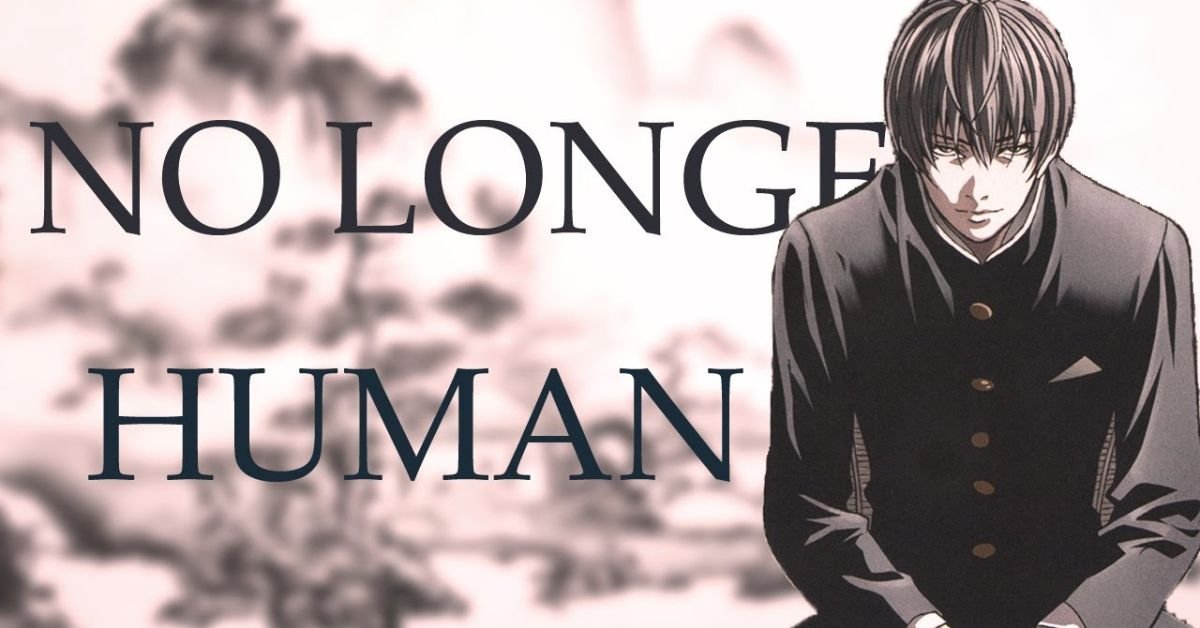No Longer Human
(Japanese: 人間失格, Ningen Shikkaku) It is one of the most well-known and influential works of Japanese literature, written by Osamu Dazai. First published in 1948, the novel is a semi-autobiographical exploration of alienation, despair, and the profound emotional turmoil that the protagonist, Yozo Oba, experiences throughout his life.
The story remains a classic in Japanese literature and continues to be studied for its deep psychological insight and unique narrative style.
Plot Summary
The story of No Longer Human follows the life of Yozo Oba, a man who feels disconnected from society and unable to understand the behaviour of those around him. He begins his life as a child in an upper-class family but feels a deep sense of alienation, often unable to empathize with his peers and family members. As he grows older, his inability to communicate and relate to others leads to a series of personal crises, including addiction, mental illness, and failed relationships.
The novel is structured as a series of notebooks by Yozo, recounting his experiences, feelings, and observations. These notebooks are presented in three parts, offering glimpses into his deteriorating mental state.
Throughout the novel, Yozo frequently describes himself as a “non-human” being who cannot understand or relate to the human experience meaningfully. His internal monologue reveals a deep isolation, confusion, and disillusionment with society.
Themes and Analysis
- Alienation and Isolation One of the central themes of No Longer Human is alienation. Despite his best efforts, Yozo’s inability to connect with others leaves him feeling like an outsider in the human race. This sense of isolation is not just social but also existential, as Yozo questions the very nature of his existence. His struggle to find meaning in life reflects the broader disillusionment of post-war Japan, where many individuals felt a profound loss and confusion.
- Identity and Self-Perception Throughout the novel, Yozo grapples with his sense of identity. He does not know who he is or his place in society. His efforts to conform to societal expectations—whether in his family, friendships, or romantic relationships—are met with failure, further reinforcing his belief that he is fundamentally different from others. This identity crisis is a critical element in the novel, as Yozo’s search for meaning in a world he cannot understand leads him to a destructive path.
- Mental Illness and Despair Yozo’s mental state is fragile throughout the novel. His thoughts and actions are often erratic, and he frequently turns to alcohol and drugs to numb his pain. The depiction of his mental illness is one of the most striking aspects of the novel, offering a raw and unflinching look at the psychological toll of alienation and despair. His struggle with depression and his suicide attempts are depicted with haunting clarity, making No Longer Human a powerful exploration of the human psyche.
- The Human Condition At its core, No Longer Human is a reflection on the human condition and the struggles individuals face when confronted with feelings of worthlessness and alienation. The novel’s title suggests a loss of humanity—Yozo’s perception that he has transcended or been cast out from the human experience. This sense of being “other” can resonate with readers who have experienced feelings of disconnection or existential crisis, making the novel both a personal and universal exploration of suffering.
Literary Style and Influence

Dazai’s writing style is often described as minimalist and introspective. In the form of Yozo’s notebooks, the novel’s fragmented structure creates a sense of disjointedness, mirroring his fragmented sense of self. The contemplative nature of the story also allows readers to delve deeply into Yozo’s mind, viscerally experiencing his emotions and thoughts. Dazai’s ability to capture the nuances of mental illness and existential despair while avoiding overt melodrama is one of the reasons why No Longer Human remains such a compelling work.
The novel also reflects Dazai’s struggles with depression, suicide, and a sense of alienation, adding an autobiographical element to the text. Dazai’s own life was marked by attempts at suicide and deep psychological pain, making No Longer Human not just a fictional account but also a profoundly personal exploration of his inner turmoil.
Cultural Context
No Longer Human was written in the aftermath of World War II, during a time of profound cultural and societal upheaval in Japan. The war had left the country in ruins, and many individuals, particularly the youth, felt disconnected from the values and norms of the pre-war era. This disillusionment is reflected in Yozo’s character, who finds it difficult to make sense of the world around him.
The novel also speaks to the changing gender roles and expectations in post-war Japan. Yozo’s relationships with women are marked by detachment and dysfunction, and his inability to relate to them further deepens his isolation. This reflects broader tensions in Japanese society during this period, as traditional roles and values were challenged after the war.
Conclusion
No Longer Human is a deeply haunting and thought-provoking novel that examines the human experience through the eyes of an individual who feels disconnected from the world around him. Through Yozo Oba’s struggles, Osamu Dazai explores themes of alienation, identity, mental illness, and despair, all set against the backdrop of post-war Japanese society.
The novel’s raw emotional depth and psychological insight have made it a timeless classic, resonating with readers worldwide who have grappled with loneliness and existential crisis.
Latest post






